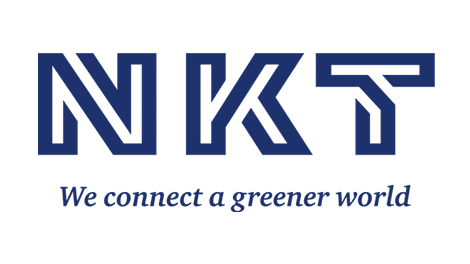NKT – NKT awarded the contract for export power cables for the Baltic Power Offshore Wind Park
NKT has signed the order for the power cable system for the Polish offshore wind project Baltic Power.
The project is important for the transition to renewable energy in Poland and the national ambitions of up to 11 GW offshore wind installed by 2040.
Now, NKT has signed the order for offshore export power cables for the Baltic Power Offshore Wind Park which will be the first offshore wind farm in Poland located 23 km off the coast. With 76 wind turbines, it provides a capacity of up to 1.2 GW and will thereby be an important contributor to the Polish ambitions to install up to 11 GW of offshore wind in the Baltic Sea by 2040.
– We are proud to support the development of offshore wind in the Baltic Sea with the order for Baltic Power. The project is an important step in the Polish transition to renewable energy, and we are pleased to leverage our experience to support the development of the offshore wind sector in Poland, says Lukas Sidler, Executive Vice President and Head of HV Solutions in Cologne, where NKT will manufacture the offshore power cables.
NKT will execute the power cable project for Baltic Power in a consortium with two partners.
The order award does not change the 2023 financial outlook for NKT.
Facts:
- Contract value: More than EUR 120m ( more than EUR 110m in std. metal prices)
- Customer: Baltic Power Sp. z.o.o., a joint venture between PKN ORLEN (Poland) and Northland Power (Canada)
- NKT scope: Design and production of offshore export power cables including accessories
- Cable specifications: 230 kV high-voltage AC XLPE power cable system in four circuits of approx. 32 km comprising a total length of approx. 130 km.
- Schedule: Commissioning of the full project is expected by 2026
SourceNKT
EMR Analysis
More information on NKT: See the full profile on EMR Executive Services
More information on Claes Westerlind (President and CEO, NKT): See the full profile on EMR Executive Services
More information on Lukas Sidler (Executive Vice President, Head of HV Solutions Cologne, NKT): See the full profile on EMR Executive Services
More information on Baltic Power Sp. z.o.o. and the the Polish project Baltic Power Offshore Wind Park: https://www.balticpower.pl/en/ + The Baltic Power offshore wind farm is an essential element of transformation of the ORLEN Group and a milestone in the development of the Polish power sector. As soon as in 2024, we will start the construction of an up to 1.2 GW offshore wind farm, expected to ultimately supply clean electricity to more than 1 ,5 million households in Poland.
The Baltic Power offshore wind farm is a key project for the ORLEN Group and Northland Power, supporting transition towards a clean, low-carbon economy. Renewable energy sources, including offshore wind farms, will be a springboard for our sustainable development in the years to come. Located 23 km to the north of the Polish coastline, on the level of Choczewo and Łeba, Baltic Power is one of the most advanced projects planned in the Polish Exclusive Economic Zone in the Baltic Sea. We hold a licence to construct an up to 1.2 GW wind farm, but its target generation capacity resulting from the selected turbine technology will be 1140 MW.

EMR Additional Notes:
- Low Voltage (LV):
- The International Electrotechnical Commission (IEC) defines supply system low voltage as voltage in the range 50–1000 V AC or 120–1500 V DC.
- Medium Voltage (MV):
- Medium-voltage circuit breakers rated between 1 and 35/72 kV.
- High Voltage (HV):
- The International Electrotechnical Commission define high voltage as above 1000 V for alternating current, and at least 1500 V for direct current.
- Super High Voltage:
- Is >300kV.
- Ultra High Voltage:
- Is >1.000kV.
- XLPE:
- Cross-linked polyethylene, commonly abbreviated PEX, XPE or XLPE, is a form of polyethylene with cross-links.
- XLPE or Cross-linked polyethylene is a thermoset insulation material. Crosslinking polymers is a process which changes the molecular structure of the polymer chains so that they are more tightly bound together and this crosslinking is done either by chemical means or physical means.
- XLPE is suitable for voltage ranges from low to extra high voltage, surpassing other insulation materials such as PVC, Ethylene Propylene Rubber (EPR) and silicone rubbers. Cross-linking the polyethylene also enhances the chemical and oil resistance at elevated temperatures and makes it suitable for use as a Low Smoke Zero Halogen material.
- AC (Alternating Current) & DC (Direct Current) & UC (Universal Current):
- Direct current (DC) is an electric current that is uni-directional, so the flow of charge is always in the same direction. As opposed to alternating current, the direction and amperage of direct currents do not change. It is used in many household electronics and in all devices that use batteries.
- Direct current has many uses, from the charging of batteries to large power supplies for electronic systems, motors, and more. Very large quantities of electrical energy provided via direct-current are used in smelting of aluminum and other electrochemical processes.
- in contrast to AC power, DC power is entirely made up of active power, meaning that there are almost no losses due to the capacitance of wires when DC power travels long distances. In fact, high voltage AC transmission systems have losses of 7% to 15% with aboveground transmission.
- Alternating Current is used in homes as Direct current can not be easily stepped up or stepped down with the help of transformers whereas alternating current can easily be converted from low voltage to high voltage or vice-versa with the help of transformers.
- “UC” is used for “Universal Current”, that translates to “either DC or AC”. So a 24 V UC input can accept either 24 V AC or 24 V DC.


